Full-size beds, also called “double beds,” are generally bigger than a twin and slightly smaller than the popular queen-size mattress. The difference is in the overall surface area, length, and width.
What you might not know is how those slight differences could impact performance, price, and more. With this in mind, we’re breaking down the differences between a full and queen-size bed. Our goal is to give you all the necessary details to decide which one is right for you.
Full vs. Queen Mattress Comparison Chart
| Full Bed | Queen Bed | |
| Width | 54 inches | 60 inches |
| Length | 75 inches | 80 inches |
| Price | Less expensive | More expensive |
| Best For | Solo sleepers, guest rooms, smaller bedrooms | Couples, bigger bedrooms, taller people |
Best Full Mattress
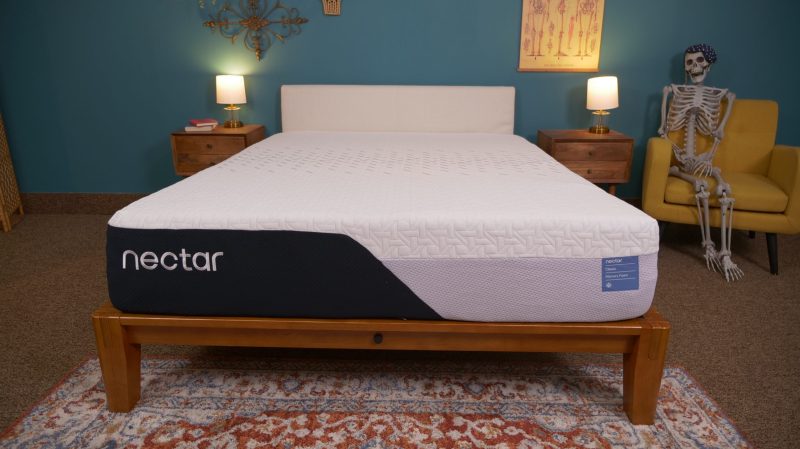
Nectar Mattress
Nectar provides a premium memory foam bed backed up by a year-long trial and a Forever warranty.
Best Queen Mattress
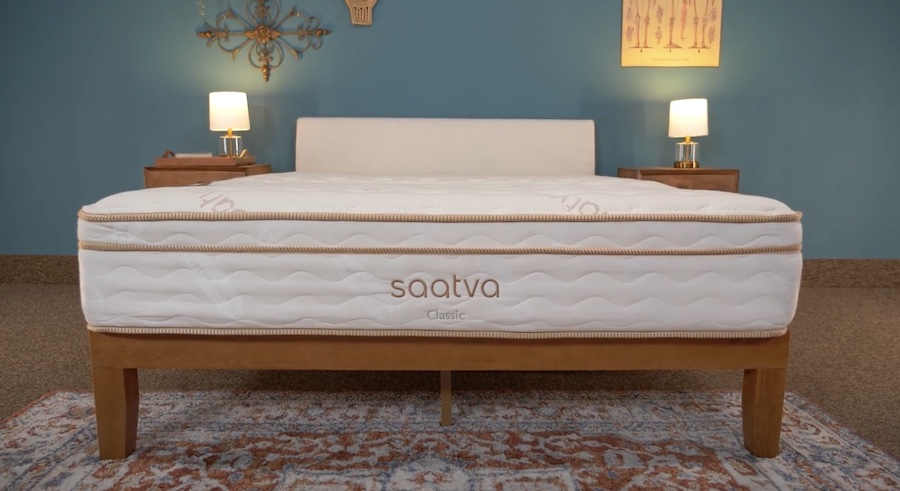
Saatva Mattress
Coil-on-coil structure gives this elevated innerspring bed a luxurious feel and versatility.
Mattress Experts Discuss Mattress Sizes

What to Consider When Choosing a Full or Queen Mattress
Dimensions
A full-size bed measures 54 inches by 75 inches while the queen size measures 60 inches by 80 inches. Since the queen offers more length and width, it’s usually the better of the two for couples.
The advantage of a full-size bed is that it would provide you with a substantial amount of sleeping space without taking a whole lot from your room. Even though it’s not as compact as a regular twin, it should comfortably fit within the majority of bedrooms.
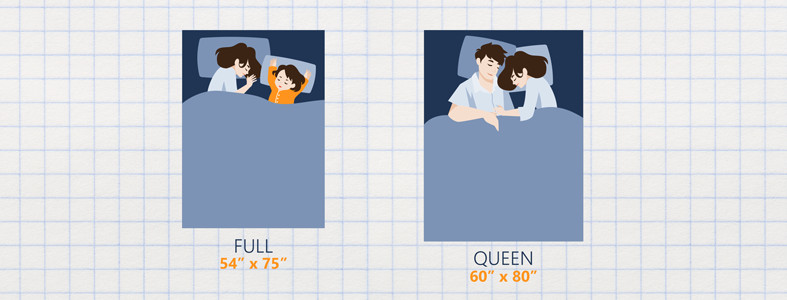
Price
Regardless of the brand or build you go for, a full-size mattress is always going to be cheaper than a queen because they are comparatively smaller. Bedding for queen-size mattresses will also be more costly than full-size options.
The average queen-size mattress can cost you anywhere from $300 for a budget memory foam mattress to $2,500 or more for a luxury hybrid or latex model. Meanwhile, full-size mattresses tend to be 10-20 percent less than their queen counterparts, which can save you up to a few hundred dollars.
Learn more: How Much Does a Mattress Cost?
Comfort
Full-size beds can provide a good amount of space for solo sleepers, especially if they like to spread out. However, if you sleep with a pet or are part of a couple, the extra space from a queen bed would be ideal. Some couples may choose to go with a full if they have limited space or a smaller budget, but keep in mind these don’t offer much room for two people to spread out.
Body Size
Your height and weight can impact what mattress size will be best for you. If you’re a smaller person under 5 feet 9 inches tall, a full-size mattress should offer plenty of room for you to comfortably stretch out. Taller folks, meanwhile, might want to lean towards a queen, which is longer and wider than a full-size bed (60 inches wide by 80 inches long for a queen, compared to 54 inches wide by 75 inches long for a full). Larger sleepers might find their feet dangling off a full-size mattress or that they can’t sprawl out.
Sleeping Position
While both a full- and queen-size mattress can technically accommodate any sleeping position, you might find certain positions more comfortable on a larger bed. If you’re a side sleeper who curls up on the edge of a mattress with your knees drawn up, you’ll likely sleep comfortably on either size mattress. Stomach sleepers, especially those who sleep with their arms out to a T, will probably enjoy a roomier queen-size mattress so their arms don’t dangle off of the bed. The same goes for back sleepers who need extra length for their legs.
Bedding
Accessories for full-size beds are incredibly common, and you would be able to find different sets at prices that are fairly affordable. Finding accessories for your queen-size bed should also be a breeze as this is one of the most purchased sizes. In many cases, queen-size products will likely cost more, but depending on the brand and product, the price difference may not be dramatically different.
Room Size
If you want to purchase a full-size bed, the recommended room size should be about 10 feet by 12 feet. If you don’t have that, you should consider going down to a twin-size to give yourself additional walking space around the mattress.
With a queen size, your room should ideally be 12 feet by 12 feet — or even 10 feet by 12 feet. While a queen bed could fit in a room that is 10 feet by 10 feet, you won’t get much extra space around it.
Children and Pets
Do your kids or pets regularly climb into bed with you? If so, a queen-size mattress will better accommodate the whole family, including furry friends. This is especially true for folks with larger dogs or young children who don’t like sleeping alone at night. However, if your only bedmate is a small pet, you might still be able to get away with comfortably sleeping on a full.
Full-Size Mattress Pros and Cons
Explore our picks for the Best Full Mattresses.
Queen-Size Mattress Pros and Cons
Discover the Best Queen Mattresses.
Compare Some of Our Favorite Full and Queen Sized Beds

|
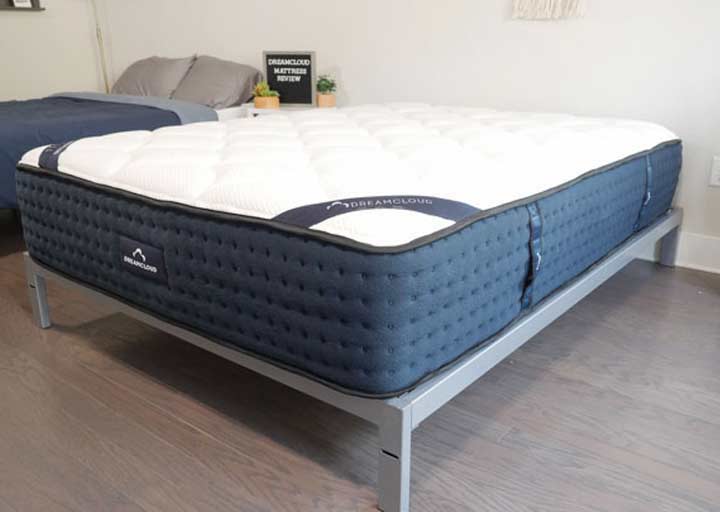
|
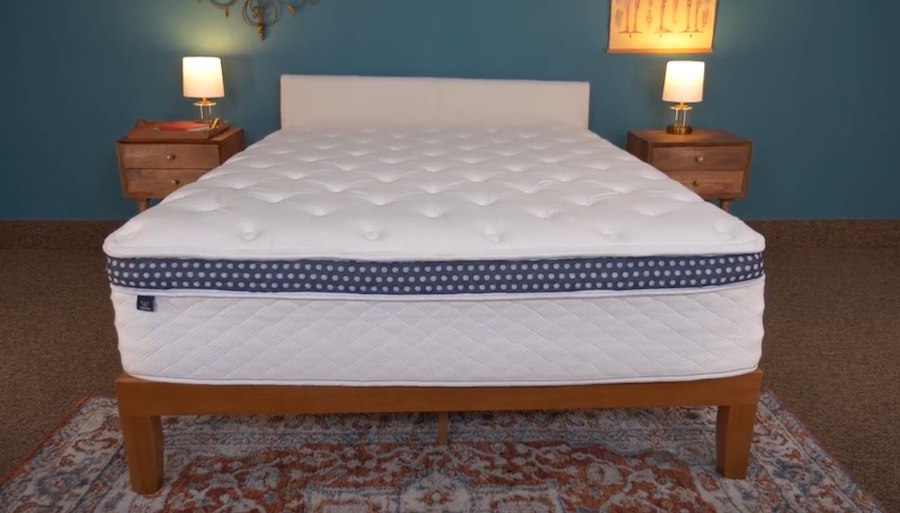
|

|
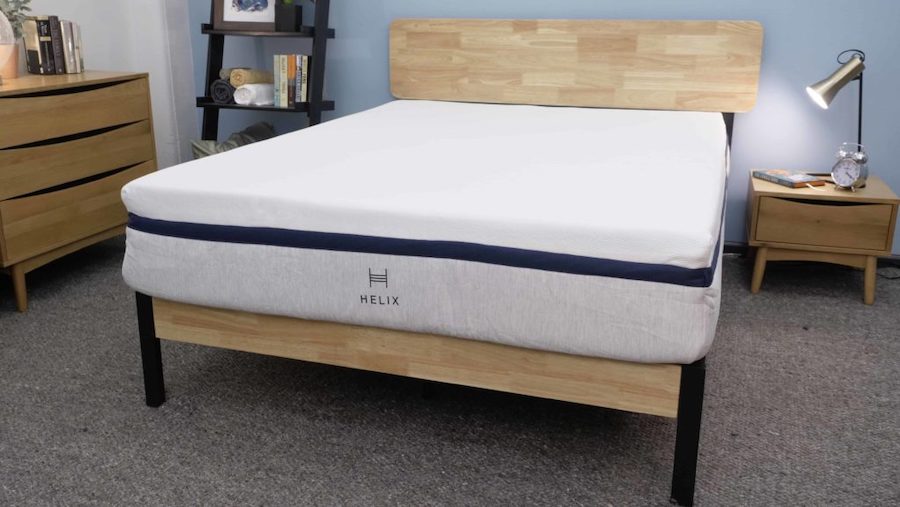
|
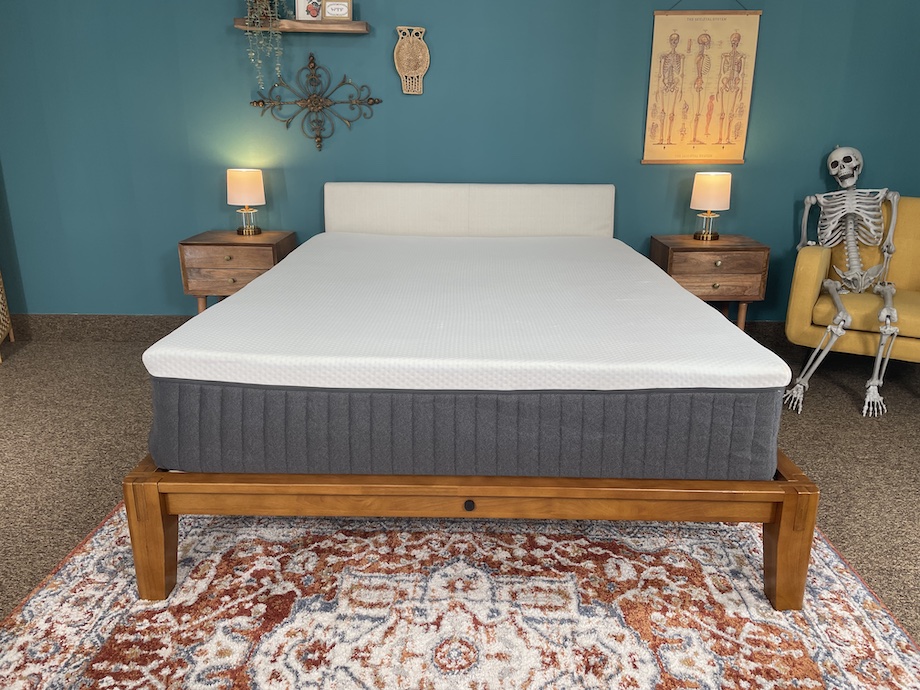
|
|
| Nectar Mattress | DreamCloud Original Mattress | WinkBed Mattress | Saatva Mattress | Helix Midnight Mattress | Emma Hybrid Comfort | |
| Rating | ||||||
| Firmness | Firm: 7.5/10 | Medium-firm: 6.5/10 | Multiple firmness options | Multiple firmness options | Medium-firm: 6/10 | Firm: 7/10 |
| Material | Foam | Hybrid | Hybrid | Innerspring | Hybrid | Hybrid |
| Cooling | — | — | ||||
| Warranty | Lifetime warranty | Lifetime warranty | Lifetime warranty | Lifetime warranty | 10-year warranty | 10-year warranty |
| Shipping | Free shipping | Free shipping | Free shipping | Free white glove delivery | Free shipping | Free shipping |
| Trial Period | 365 nights | 365 nights | 120 nights | 365 nights | 100 nights | 365 nights |
| Best For | Back Sleepers, Back Pain, Stomach Sleepers, Side Sleepers, Couples | Back Sleepers, Hot Sleepers, Seniors | Back Sleepers, Stomach Sleepers, Back Pain, Hot Sleepers, Side Sleepers, Hip Pain, Seniors | Back Sleepers, Stomach Sleepers, Back Pain, Hot Sleepers, Seniors | Couples, Back Sleepers, Side Sleepers | Back Sleepers, Stomach Sleepers, Hot Sleepers |
FAQs About Full vs. Queen Mattresses
Is a full mattress big enough for two people?
A full-size mattress is generally around 54 inches wide and 75 inches long. Therefore, if you share a full-size bed with a partner, you would each get around 27 inches of sleeping space. This is less room than someone would get on a twin-size mattress and wouldn’t give couples much space to spread out. If you plan on sleeping with a partner long-term, consider looking at our list of the best mattresses for couples.
Taller couples may also want to consider the length of these beds as those who are 6 feet or taller won’t have as much room to stretch out. However, if your bedmate and you like to sleep cuddled up, a Full size may be fine for both partners.
Is a full mattress better than a queen?
Full and queen mattresses both have benefits and drawbacks, and when choosing between the two, it usually boils down to your personal preferences, amount of space, and budget. Queen beds are bigger, which makes them better for couples, but they are also more expensive. Full beds can be great when you are dealing with a small room or if you’re a solo sleeper who just wants more room to stretch out.
Can I use full sheets on a queen bed?
No, you should not use full sheets on queen beds. A queen bed is wider and longer than a full one, which means full sheets will come up short if you try to use them on a queen bed.
How big is a full vs. queen bed?
The exact dimensions can vary from bed to bed, but generally, a full-size bed is 54 inches wide by 75 inches long. With a queen-size mattress, you will typically add about 6 inches to the width and 5 inches to the length, bringing its dimensions to 60 inches by 80 inches.
Final Word of Advice
As you can see, the differences between full-size beds and queen-size ones can be substantial, especially if those few inches on top are what you’re looking for.
At the same time, the size of your mattress is also going to determine a few different components such as the overall comfort and how accommodating that size is for your bedroom. If you have a smaller room, it’s wiser to go with a smaller option to leave enough space for other necessary furniture as well.
The Advisor Says
If you’re still on the fence about sizing, try visiting a local mattress store and asking to try both a full and queen mattress or at the least the opposite of what you’ve already got at home. This way, you can physically see what size you like better before ordering anything.

Jill Zwarensteyn
Senior Editor
About Author
Jill Zwarensteyn is the senior editor for Sleep Advisor and a certified sleep science coach. She is enthusiastic about providing helpful and engaging information on all things sleep and wellness.
Combination Sleeper
Education & Credentials
- Certified Sleep Science Coach